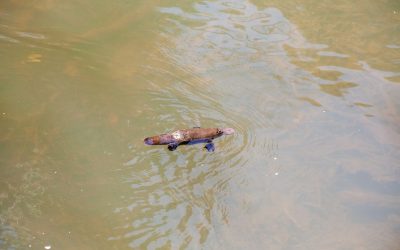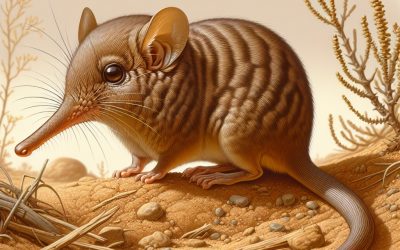Explore the World Through Geography, Natural Resources & Daily History
Clear, reliable and engaging guides that help you understand our planet — from UK geography education to global natural resources and On This Day history events.
Explore, discover, and learn about the wonders of our world! At Earth Site, we’re passionate about bringing geography, history, and science to life for curious minds of all ages. Whether you’re delving into historical events, uncovering the mysteries of the natural world, or seeking interactive resources, you’re in the right place.
Here, you can uncover the stories behind historical events, explore the natural wonders of our planet, and gain valuable insights into how the Earth’s systems shape our daily lives. From the towering peaks of mountain ranges to the far-reaching impacts of human innovation, we aim to make every topic both engaging and informative.
Start your journey of discovery with us today, and let’s make learning an adventure!
What We Cover
Earth Site brings together engaging and accessible educational content designed to help you understand the world, its history, and its natural systems.
🌍 Geography Education (UK & Worldwide)
We publish clear, easy-to-understand geography resources for students, teachers and curious learners. Our guides support geography education in the UK and cover physical geography, climate, ecosystems, population, and global development.
⛏️ Natural Resources & Environmental Geography
Explore detailed country profiles covering natural resources, mining, energy, geology and global environmental challenges. We show how nations manage minerals, water, land and ecosystems, and why these resources matter.
📅 On This Day in History
Every day has a story. Our On This Day history series features major events, anniversaries, traditions, and cultural milestones from around the world — with timelines, context, and fun facts.
TIMELINE
Discovering the Fascinating World of Microbiotheria: The Enigmatic Monito Del Monte
The Monito Del Monte, also known as the “little monkey of the mountain,” is a small marsupial that is native to the temperate rainforests of South America. It is the only surviving member of the order Microbiotheria, making it a truly unique and mysterious animal. The Monito Del Monte has captured the attention of scientists and researchers due to its distinct characteristics and evolutionary history. Studying the Monito Del Monte is important for several reasons. Firstly, it provides valuable insights into the evolution and adaptation of marsupials. As one of the most primitive marsupials, the Monito Del Monte can help scientists understand how these animals have evolved over millions of years. Additionally, studying this species can shed light on the ecological role it plays in its habitat and its interactions with other species. Summary The Monito Del Monte is a unique and mysterious animal. Microbiotheria is the taxonomic group to which the Monito Del Monte belongs. The Monito Del Monte’s natural habitat is in the temperate rainforests of South America. The Monito Del Monte has physical characteristics that allow it to adapt to its surroundings. The Monito Del Monte’s diet and digestive system have been studied to understand its feeding habits. The Taxonomy and Evolution of Microbiotheria: Understanding the Monito Del Monte’s Place in the Animal Kingdom Microbiotheria is an order of marsupials that includes only one living species, the Monito Del Monte. This order is believed to have diverged from other marsupials around 65 million years ago, making it one of the oldest lineages of marsupials. The Monito Del Monte shares some similarities with other marsupials, such as...
Uncovering the Hidden Gems of Greece: A British Traveller’s Guide
Greece is a popular tourist destination known for its stunning landscapes, rich history, and vibrant culture. From the iconic ruins of Athens to the beautiful beaches of the Greek Islands, there is no shortage of attractions for visitors to explore. However, beyond the well-known tourist spots, Greece is also home to a wealth of hidden gems and off-the-beaten-path destinations that offer a unique and authentic experience. Hidden gems are those lesser-known destinations that are often overlooked by tourists but are well worth a visit. These hidden gems provide an opportunity to escape the crowds and discover a side of Greece that is less explored. Whether it’s exploring ancient ruins, hiking through breathtaking landscapes, or immersing yourself in local culture, these off-the-beaten-path destinations offer a chance to experience Greece in a whole new way. Summary Greece has many hidden gems that are off the beaten path and offer unique experiences. Exploring the authentic Greek culture and traditions is a must for anyone visiting Greece. The natural wonders of Greece, including its secret beaches and coves, are breathtaking and worth discovering. The lesser-known Greek islands offer a quieter and more authentic experience than the popular tourist destinations. Trying the lesser-known Greek foods is a must for any foodie visiting Greece. The Best Off-The-Beaten-Path Destinations in Greece 1. Meteora: Located in central Greece, Meteora is a UNESCO World Heritage site known for its monasteries perched atop towering rock formations. The monasteries were built by monks seeking solitude and spiritual enlightenment, and today they offer visitors a glimpse into this unique way of life. The dramatic landscape of Meteora is truly awe-inspiring, with...
Uncovering the Wonders of Silicon: A British Perspective
Silicon is a chemical element with the symbol Si and atomic number 14. It is a hard, brittle crystalline solid with a blue-grey metallic lustre, and is a tetravalent metalloid and semiconductor. It is a member of group 14 in the periodic table: carbon is above it; and germanium, tin, and lead are below it. It is relatively unreactive. Because of its high chemical affinity for oxygen, it was not until 1823 that Jöns Jakob Berzelius was able to prepare it in pure form. Its melting and boiling points of 1414 °C and 3265 °C respectively are the second-highest among all the metalloids and nonmetals, being only surpassed by boron. Silicon is the eighth most common element in the universe by mass, but very rarely occurs as the pure element in the Earth’s crust. It is most widely distributed in dusts, sands, planetoids, and planets as various forms of silicon dioxide (silica) or silicates. More than 90% of the Earth’s crust is composed of silicate minerals, making silicon the second most abundant element in the Earth’s crust (about 28% by mass) after oxygen. Summary Silicon is a versatile and abundant element with many applications in modern technology. Britain has a rich history of silicon production and innovation, dating back to the 19th century. Silicon plays a crucial role in the aerospace, medical, energy, automotive, and telecommunications industries. The environmental impact of silicon production is a growing concern, but new technologies are being developed to mitigate it. Despite challenges, silicon remains a vital component of British industry and innovation. The History of Silicon in Britain The discovery and early use...
Discovering the Hidden Gems of Ghana: A Journey Through the Heart of West Africa
Welcome to a journey of discovery through the beautiful country of Ghana. In this blog post, we will explore the rich history, vibrant culture, natural wonders, beautiful beaches, ancient kingdoms, delicious cuisine, art and craftsmanship, warm hospitality, and sustainable tourism practices that make Ghana a truly unique and captivating destination. As someone who has had the privilege of visiting Ghana, I can attest to the fact that it is a country that leaves a lasting impression on its visitors. From the moment you step foot in Ghana, you are greeted with warmth and friendliness by the Ghanaian people. The country’s rich history and culture are evident in its ancient kingdoms, colonial past, and vibrant festivals. The natural beauty of Ghana is awe-inspiring, with its waterfalls, wildlife reserves, and stunning coastline. And let’s not forget about the mouthwatering cuisine and beautiful art and craftsmanship that can be found throughout the country. Summary Ghana is a country rich in history, culture, and natural wonders. Accra is a vibrant city with plenty to explore, from markets to museums. Ghana’s waterfalls, wildlife, and coastline offer stunning natural beauty. Ancient kingdoms and their mysteries can be uncovered through exploration. Ghanaian cuisine, art, and hospitality are not to be missed, and sustainable tourism supports local communities and conservation efforts. The Rich History and Culture of Ghana Ghana has a fascinating history that dates back centuries. It was once known as the Gold Coast due to its abundance of gold resources. The country was colonized by the British in the 19th century and gained independence in 1957, becoming the first African nation to do so. This...
The Wonders of Monotremata: Exploring the Fascinating World of Platypus and Echidnas
Monotremata, also known as monotremes, is a unique order of mammals that includes the platypus and echidnas. They are characterized by their egg-laying reproduction, which sets them apart from other mammals. Monotremes are considered to be one of the most primitive groups of mammals, with their lineage dating back over 200 million years. One of the defining characteristics of monotremes is their ability to lay eggs. This is a trait that is typically associated with reptiles and birds, making monotremes a fascinating evolutionary anomaly. The eggs of monotremes have a leathery shell and are incubated outside the mother’s body. Monotremes also possess a number of other unique characteristics. For example, they have a cloaca, which is a single opening for excretion and reproduction. They also lack nipples and instead secrete milk through specialized mammary glands that are located on their abdomen. Monotremes are found in Australia and New Guinea, with the majority of species being endemic to Australia. They inhabit a range of habitats, from rainforests to deserts, and can be found in both terrestrial and aquatic environments. The diversity of monotremes is relatively low, with only five extant species known to science. Summary Monotremata is a unique order of mammals that lay eggs instead of giving birth to live young. The platypus is a marvel of evolution with a unique anatomy that includes a duck-like bill and webbed feet. Echidnas, also known as spiny anteaters, are another type of monotreme found in Australia. Monotremes have a unique reproductive system where females lay eggs and then nurse their young with milk. Platypus and echidnas have unique hunting and feeding...
Discovering the Hidden Gems of Germany: A British Perspective
Germany is often overlooked as a travel destination for British travellers. Many people opt for more popular destinations like France, Spain, or Italy. However, Germany has a lot to offer, from stunning natural landscapes to rich history and culture. This blog post will explore the best German cities to visit, natural landscapes to explore, historical sites to uncover, festivals to attend, culinary delights to try, unique attractions to discover, and accommodation options to suit all budgets. Summary Germany is a hidden gem for British travellers Berlin and Munich are two of the best German cities to visit The Black Forest and other natural landscapes are stunning to explore Germany’s rich history can be uncovered through castles, museums and more Oktoberfest and other festivals offer a unique cultural experience The Best German Cities to Visit: From Berlin to Munich Germany is home to many vibrant and diverse cities that are worth exploring. Berlin, the capital city, is a must-visit for its rich history and culture. From the iconic Brandenburg Gate to the remnants of the Berlin Wall, there are plenty of historical sites to discover. Munich is another popular city known for its beer gardens and Oktoberfest. It’s a great place to experience Bavarian culture and indulge in traditional German cuisine. Hamburg is a port city with a lively music and arts scene. It’s also home to the famous Reeperbahn, a street known for its nightlife and entertainment. Cologne is famous for its cathedral and Christmas markets, which are a must-visit during the holiday season. Frankfurt, on the other hand, is a financial hub with a mix of modern and...
Mastering Trigonometry: Navigating the Unit Circle with Confidence
Trigonometry is a branch of mathematics that deals with the relationships between the angles and sides of triangles. It is a fundamental concept in mathematics and has numerous applications in various fields such as physics, engineering, and architecture. In this blog post, we will provide a comprehensive guide to understanding trigonometry, covering everything from the basics to more advanced concepts. Whether you are a beginner or looking to refresh your knowledge, this guide will help you navigate the world of trigonometry with confidence. Key Takeaways Trigonometry is the study of triangles and their relationships with angles and sides. The unit circle is a key tool in trigonometry, representing the values of sine and cosine for all angles. Sine, cosine, and tangent are the three primary trigonometric functions used to solve problems involving triangles. Trigonometric equations and inequalities can be solved using algebraic techniques and the unit circle. The Pythagorean identity, a² + b² = c², is a fundamental concept in trigonometry that relates the sides of a right triangle. Understanding the Basics of Trigonometry: A Guide for Beginners Trigonometry is derived from two Greek words: “trigonon” meaning triangle and “metron” meaning measure. It is essentially the study of triangles and the relationships between their angles and sides. Trigonometry involves the use of six trigonometric functions: sine, cosine, tangent, cosecant, secant, and cotangent. These functions are used to calculate the ratios between the sides of a right triangle. Angles in trigonometry are typically measured in degrees or radians. A degree is a unit of measurement that divides a circle into 360 equal parts, while a radian is a unit of...
Discovering Georgia: Exploring the Rich Culture and Scenic Beauty of the Peach State
Georgia, located in the southeastern United States, is a state rich in history, culture, and natural beauty. From its Native American roots to its role in the Civil Rights Movement, Georgia has a fascinating history that has shaped the state into what it is today. With its stunning mountains, beautiful beaches, and picturesque parks, Georgia offers a wealth of natural beauty to explore. The state is also known for its delicious food, vibrant music scene, historic architecture, thriving art and culture scene, and passionate sports culture. Whether you’re interested in history, outdoor adventures, culinary delights, or simply soaking up the unique atmosphere of Georgia’s small towns, there is something for everyone in this diverse and captivating state. Summary Georgia has a rich history that spans from Native American tribes to the Civil Rights Movement. The state boasts stunning natural beauty, including mountains, beaches, and parks. Georgia is famous for its delicious foods, such as peaches and barbecue. The music scene in Georgia is diverse, featuring blues, jazz, country, and hip-hop. Georgia’s architecture ranges from historic antebellum homes to modern skyscrapers. The History of Georgia: From Native American Tribes to the Civil Rights Movement Georgia has a rich and complex history that spans thousands of years. The area that is now Georgia was originally inhabited by Native American tribes such as the Cherokee, Creek, and Choctaw. European colonization began in the 16th century when Spanish explorers arrived in the region. In 1732, James Oglethorpe founded the colony of Georgia as a haven for debtors and a buffer between Spanish Florida and the British colonies to the north. Georgia played a...
Exploring the Fascinating World of Macroscelidea: Meet the Adorable Elephant Shrews!
Elephant shrews, also known as sengis, are small mammals that belong to the order Macroscelidea. Despite their name, they are not shrews and are not closely related to elephants. Elephant shrews are found in Africa and are known for their unique characteristics and behaviours. They have a long nose, slender body, and long hind legs, which allow them to move quickly and efficiently through their habitats. Elephant shrews are small in size, typically measuring between 10 to 30 centimeters in length, excluding their tails. They have a slender body with short fur that can range in color from brown to gray. One of the most distinctive features of elephant shrews is their long nose, which is flexible and can be moved in different directions. This long nose helps them in foraging for food and detecting predators. Summary Elephant shrews are small, insect-eating mammals found in Africa. They have a distinctive long, flexible nose that they use to search for food. Elephant shrews live in a variety of habitats, from forests to deserts. Their diet consists mainly of insects, but they also eat fruits and seeds. Elephant shrews are solitary animals that communicate with each other through scent marking and vocalizations. The Physical Characteristics of Elephant Shrews: From Nose to Tail. Elephant shrews have a unique physical appearance that sets them apart from other small mammals. As mentioned earlier, their long nose is one of their most prominent features. This nose is not only used for foraging but also for communication and navigation. Elephant shrews have a keen sense of smell, which helps them locate food and detect potential...
Discovering the Hidden Gems of The Gambia: A Journey Through West Africa’s Smiling Coast
The Gambia, located on the western coast of Africa, is a small country known for its beautiful beaches, vibrant culture, and friendly people. With a population of just over 2 million people, The Gambia is the smallest country on mainland Africa. Despite its size, it is often referred to as “West Africa’s Smiling Coast” due to the warm and welcoming nature of its people. In this blog post, we will uncover the rich history and culture of The Gambia, explore its natural wonders and wildlife reserves, discover the best beaches and coastal villages to visit, sample the local cuisine and delicacies, delve into the vibrant arts and crafts scene, learn about the spiritual and religious traditions, admire the unique architecture and landmarks, meet the friendly and welcoming people, and provide tips for planning your perfect trip to The Gambia. Summary The Gambia is known as West Africa’s Smiling Coast, and is a popular tourist destination. The country has a rich history and culture, with many opportunities to learn and explore. Wildlife reserves offer a chance to see unique and diverse animals in their natural habitats. The Gambia’s beaches and coastal villages are some of the best in the region. Local cuisine and delicacies are a must-try, and the arts and crafts scene is vibrant and unique. Uncovering the Rich History and Culture of The Gambia The Gambia has a fascinating history that dates back centuries. It was once part of the Mali Empire and later became a British colony. The country gained independence in 1965 and has since developed into a thriving nation with a diverse cultural heritage. The...
Aluminium : The Versatile Metal That’s Revolutionizing British Industries
Aluminium is a lightweight metal that has become an integral part of various industries due to its unique properties and versatility. It is widely used in manufacturing, construction, automotive, aerospace, packaging, and renewable energy sectors. The use of Aluminium has revolutionized these industries by providing lightweight, durable, and sustainable solutions. In this article, we will explore the historical significance of Aluminium in British industries and discuss its advantages over other metals in manufacturing. We will also delve into the role of Aluminium in the automotive, aerospace, construction, packaging, and renewable energy sectors. Finally, we will examine the future of Aluminium in British industries and the opportunities and challenges it presents. Summary Aluminium is a lightweight metal with multiple applications in various industries. Aluminium has a significant historical significance in British industries. Aluminium has advantages over other metals in manufacturing, including durability and sustainability. Aluminium plays a crucial role in the automotive and aerospace industries, enhancing safety and fuel efficiency. Aluminium is also used in the construction, packaging, and renewable energy sectors, supporting the transition to a green economy. The Historical Significance of Aluminium in British Industries The discovery of aluminum dates back to the early 19th century when Sir Humphry Davy, an English chemist, first isolated the metal in 1808. However, it was not until the late 19th century that aluminum began to be used in various industries in Britain. The establishment of the aluminum industry in the UK can be attributed to the invention of a cost-effective method for producing aluminum by Charles Martin Hall in 1886. The early uses of aluminum in Britain were primarily limited to decorative items and jewelry due to its rarity...
Mastering Trigonometric Identities: Unlocking the Secrets of Sine, Cosine, and Tangent
Trigonometric identities are mathematical equations that relate the angles and sides of a right triangle. These identities are fundamental in trigonometry and play a crucial role in various branches of mathematics and science. They provide a way to simplify complex trigonometric expressions, solve equations, and graph functions. Trigonometric identities are essential tools for understanding and analyzing the behavior of trigonometric functions. Trigonometric identities are derived from the properties of the sine, cosine, and tangent functions, which are the basic trigonometric functions. These functions relate the angles of a right triangle to the ratios of its sides. The sine function (sin) represents the ratio of the length of the side opposite an angle to the length of the hypotenuse. The cosine function (cos) represents the ratio of the length of the adjacent side to the length of the hypotenuse. The tangent function (tan) represents the ratio of the length of the opposite side to the length of the adjacent side. Key Takeaways Trigonometric identities are equations that relate different trigonometric functions. Sine, cosine, and tangent are the three primary trigonometric functions used in identities. The Pythagorean identity (sin^2θ + cos^2θ = 1) is a fundamental identity used in many applications. Reciprocal and quotient identities involve the reciprocal and quotient of trigonometric functions. Even and odd identities involve the evenness or oddness of trigonometric functions. Understanding the Basics of Sine, Cosine, and Tangent To calculate the values of sine, cosine, and tangent for a given angle, you can use a scientific calculator or refer to trigonometric tables. However, it is also important to understand how these values are derived. The values...











